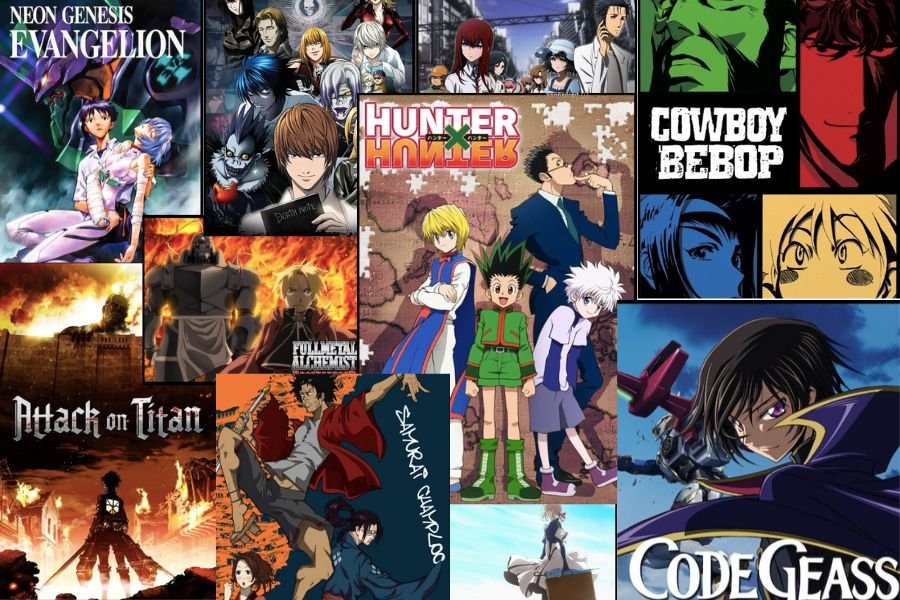Being an avid lover, you must have had a question in your mind at any point in time: how many types of Genres/Subgenres are there of Anime and Manga? Broadly, there are various categories that keep evolving year by year as this form of art and entertainment is no longer restricted to Japan only but has become a global phenomenon. We’ll be discussing the same. But before diving into the same, just have a quick look at another thought, which is quite common for newbies. Is there any difference between Manga and Anime, or are they the same?
Table of Contents
What actually are Manga and Anime, and the differences therein
Both are two sides of the same coin in Japanese pop culture. Think of Manga as the comics or graphic novels of Japan. They’re essentially illustrated stories in black and white, and they come in various genres, catering to all kinds of tastes. You read those just like a comic book, flipping through pages and immersing yourself in the artwork and the story.
On the other hand, Anime is like the animated TV shows and movies that bring these stories to life. It’s the moving and talking version of the manga. The adaption of manga’s story into an animated format, often adding color, sound, and motion to the characters and their adventures, is called Anime. You watch Anime on your screen, just like any other TV show or movie.
In simple terms, manga is the source material, like the book, and Anime is the adaptation of that source material into a visual, animated form. People often prefer one over the other, or they enjoy both, depending on how they like to experience their favorite stories. It’s like choosing between reading a book and watching a movie based on that book – both can be fantastic!
So, now you have a clear idea of what actually these are. Let’s go into the further details. Manga and anime boast a rich diversity of genres and subgenres, each tailored to specific tastes and preferences. Let’s delve into the world of their worlds and explore some of its most prevalent genres, providing a brief insight into each:
Shonen
This genre is geared towards young males and typically features the elements of action, adventure, and themes revolving around friendship. These stories often revolve around male protagonists and include classics like “One Piece,” “Naruto,” and “My Hero Academia.”
Shojo
Catering to young female readers, Shojo predominantly explores themes of romance, relationships, and personal growth. Female protagonists often lead in these stories, with renowned examples such as “Fruits Basket” and “Skip Beat!”
Seinen
Designed for adult male audiences, Seinen offers a broad spectrum of genres, from action and drama to mature themes and intricate storytelling. Notable works include “Berserk” and “Akira.”
Josei
Tailored for adult women, Josei delves into more mature and realistic themes. These tales often probe into relationships, careers, and personal struggles. Classics like “Nana” and “Paradise Kiss” exemplify this genre.
Isekei
This genre is about transporting characters to alternate worlds, setting the stage for thrilling adventures and trials. “Re: Zero” and “The Rising of the Shield Hero” are prime examples.
Mecha
The Mecha genre is all about focusing on giant robots or mechs. These stories frequently feature futuristic warfare, sci-fi elements, and intricate technology. “Mobile Suit Gundam” and “Neon Genesis Evangelion” are iconic representatives.
Fantasy
Enveloped in magical realms with mythical creatures, the fantasy genre unfolds epic quests, supernatural abilities, and grand adventures. Beloved titles include “Berserk” and “Claymore.”
Slice of Life
The slice-of-life category brings ordinary experiences, relationships, and personal growth to everyday settings. “March Comes in Like a Lion” and “Barakamon” are exemplary instances.
Science Fiction
Sci-fi ventures into futuristic technology, space exploration, and speculative narratives, often weaving complex tales. “Blame!” and “Astra Lost in Space” fall within this category.
Mystery/Thriller
This genre keeps readers riveted with suspenseful and enigmatic plots, frequently involving detective work or psychological elements. “Death Note” and “Monster” are shining examples.
Horror
Horror seeks to terrify and unsettle readers, employing supernatural or psychological elements. “Uzumaki” and “The Promised Neverland” evoke spine-tingling chills.
Comedy
Centered on humor and laughter, comedy takes various forms, from slapstick to satire. “One Punch Man” and “Gintama” are hilarious standouts.
Romance
Romance explores the intricate facets of love and relationships, diving into the emotional depths of its characters. “Kimi ni Todoke” and “Lovely★Complex” are heartwarming examples.
Sports
These are based on spotlight competitive sports and often emphasize teamwork, rivalry, and personal growth. “Haikyuu!!” and “Eyeshield 21” showcase the spirit of athleticism.
Music
Music centers around musicians, bands, or musical competitions, capturing the enchanting power of music in storytelling. “Nana” and “K-On!” hit all the right notes.
Historical
Set against diverse historical backgrounds, historical manga offers glimpses into the past while weaving engaging narratives. “Vagabond” and “Ooku: The Inner Chambers” transport readers through time.
These genres and subgenres collectively form the rich tapestry of Manga and Anime, appealing to a diverse array of readers with varying tastes and interests. It’s a versatile and beloved storytelling medium that continues to captivate audiences worldwide. However, these categories are evolving with time, and the lines between the genres and subgenres are becoming blurred with every passing day. These above-listed genres and subgenres are not industry-defined but generic in nature.




1 thought on “Ever wondered how many Genres and Subgenres are in the Anime and manga world?”